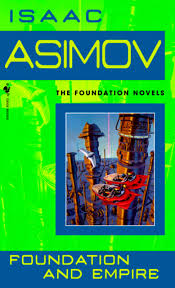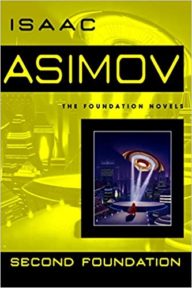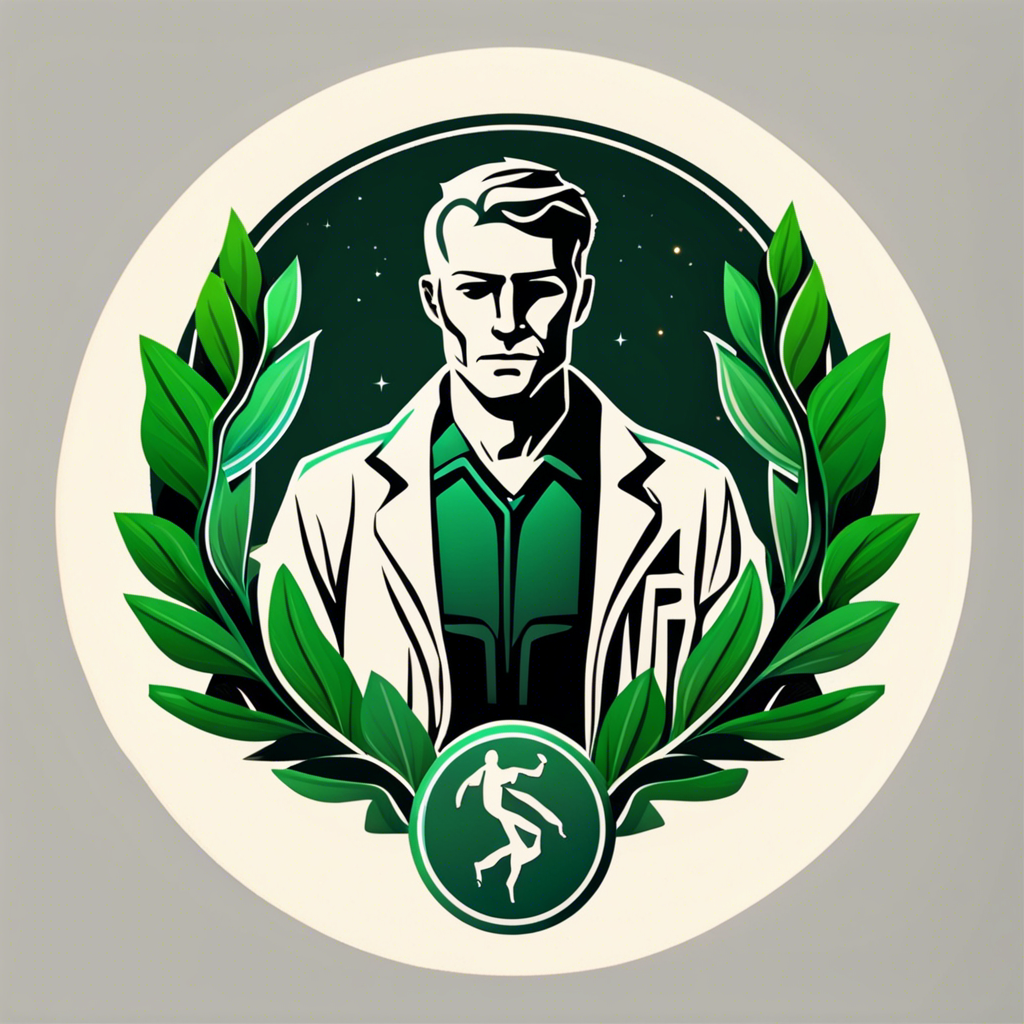HYPERION: THE GREATEST SCIENCE FICTION NOVEL EVER?
EPIGRAPH
'Just as man cannot live without dreams, he cannot live without hope. If dreams reflect the past, hope summons the future'.
- Elie Wiesel
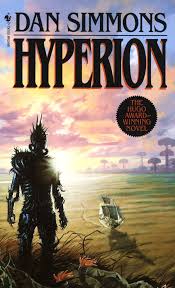
‘You and six others have been selected by the Church of the Shrike and confirmed by the All Thing’
If these words, besides piquing one’s curiosity, fail to instill a sense of dread combined with dark expectation, then I am not sure what will.
Hyperion, by Dan Simmons, published in 1989, is part one, of a two-part book that makes up the tetralogy known as the Hyperion Cantos. Drawing inspiration from the works and life of the English Romantic poet, John Keats, the books, including the second in the series: the BSFA award-winning The Fall of Hyperion (1990), and the final two additions: Endymion (1996) and the Locus award-winning The Rise of Endymion (1998) are the epitome of the word: Epic.
Whilst the latter two books in the series fall short of the mesmerizing standards of the first two, the four-book Cantos by Dan Simmons stands apart as one of the true masterworks of Science (or as Simmons would call it: ‘Speculative’) Fiction (2). The series is closed off by a novella: The Orphans of the Helix, published in 1999, which according to Simmons is the last one can expect from this world (ibid).
Having completed the four-book series and the novella a few years ago, on the back of finishing Isaac Asimov’s great Foundation trilogy, and his awesome followup to the series: Foundation’s Edge, (published almost 30 years later). I was quickly captivated by what Simmons sketches out in the eerie Prologue to his book. Despite being a relative novice to this genre, I knew what Simmons was presenting in this work was something else.
The tone, settings, ideas, concepts, themes, and prognostications of future history that were touched on, in just the first few pages, had me enthralled and perturbed. It was a book that as I would soon learn, contained layers upon layers of meaning, imagination, philosophical contemplation, politics, and of course, poetry. One that would take me years to unearth.
THE HEGEMONY

The story takes place over 700 hundred years into the future. A post-Earth humanity inhabits a spiral arm of our Milky Way galaxy. Known by its system of government, called the Hegemony: A multi-planet political organization, defined by its ostensibly republican character, with the elected from each constituent planet, represented in the central “administrative world” of Tau Ceti Center. Where the unified leadership determines the fate of this future polity. This bicameral system, encompassing a Senate and ‘lower house’, whose structure and mode of operation I will engage later.
The Senate is headed by the CEO, the name-sake executive head, and commander in chief of the official military arm of this expanding interstellar civilization. What is notable about the dozens of planetary systems that constitute this future human civilization, is that each human-occupied globe embodies a distinct cultural and by extension, national identity. Maintaining varying degrees of cultural and political autonomy, apart from the central power of the Hegemony.
The origins of various ‘national cultures’ of these planets, can be traced back to the religions, traditions, and belief systems that were native to ‘’Old Earth”-as our beloved 3rd rock from the Sun is referred to, in this dark, melancholy universe that Simmons creates. Notable here is the Catholic world of Pacem. Whilst officially a “Web World” planet (i.e. under the Hegemony’s dominion), it has become the (future) home world of the Roman Catholic Church.
The Catholic world is Catholic, almost in its entirety. In terms of the citizens who occupy it, and its external character: from the architecture, and aesthetics, to the system of (local) government. Which in Pacem, is headed by the Pope. Another example is the beautiful oceanic world of Maui-Covenant: which consists solely of mobile Islands. With environments characterized by their unique fauna and flora. Notable here is the marine life, particularly dolphins (which are native to Old Earth).
This concept of planetary uniqueness, with respect to geography, culture, ecological diversity, and, to varying extents, planetary politics, gives rise to relational dynamics that are necessarily diverse (i.e. people talk, act, and for most think differently depending on what world they’re from). Kinda like how things are today, with varying levels of extremeness. A praiseworthy feature of the complex universe that Simmons has woven. For world-building, a key facet of any SF enterprise is an area where Simmons excels.
Central to the unity of the Hegemony is the advance in travel and communication technologies. Which have been made possible by engineering feats, like the Hawking drives, that enable interstellar travel. The people who constitute this future human civilization referred to as the ‘citizens of the ‘Hegemony of Man’, can travel at velocities that can surpass the speed of light. Which yet incurs a cost in real-time.
As in the time that elapses for the rest of us, whilst those who move at, or faster than the speed of light, remain unaffected by the passing of real-time. A phenomenon in cosmology that is known as Time Dilation. (A point that is often ignored in many run-of-the-mill Sci-Fi romps). Despite the shortcomings, such technologies have enabled this future humanity to expand into, and settle in other star systems. But the establishment of a human foothold is just the beginning.
The most notable Technology underlying the Hegemony’s connectivity, and later development, is the Farcaster system. This allows near-instantaneous travel between distant regions, including different solar systems, via dedicated portals, that connect places that could be light years apart. I will leave out the specifics of this technology here.
Suffice it to say the farcaster system, along with faster-than-light communication (FAT-line), connects these disparate, far-flung planets into a (growing) interstellar network. One that is aptly called the ‘WorldWeb’: A web, that literally unites all humanity connected to these systems. (Side note: this book came out in 1989, the same year the English scientist, Sir Tim Berners-Lee, invented the WWW). Along with the Hegemony, two other ‘political’, and potentially expansionist powers constitute this universe: they are the Ousters and the TechnoCore.
OUSTERS

The Ousters are a space-faring human culture, who fled Old Earth prior to its demise in the ‘Big Mistake’: An out-of-control Black hole, conjured (for the lack of a better word) by Earth scientists, that ate away the planet over the course of many years. The Ousters were formed by the outcasts of the human species: the economically, and socially marginalized, and importantly those with deep philosophical differences from the rest of humanity.
The human factions that would come to constitute the Ousters, unlike the space-bound expatriates who would go on to shape the Hegemony, rejected the idea of human expansion via the exploration, occupation, and later colonization of other planetary systems. And instead chose a more ambitious, radical, and one could say a pro-evolutionary path.
By inhibiting asteroids, and comets, and forming new ‘ecological niches’ in the cold vacuum of space, they began to transform. Rather than shaping the world around them to suit their needs, they inverted the logic: and instead began ‘adapting’ to the alien environs around them. Hence this segment of the human species, owing to its prolonged habitation of inhospitable space, rather than habitable planet surfaces, has evolved (rather rapidly) into, what is essentially a trans-human civilization.
These exiles, unlike the Hegemony, have also rejected the contributions of the A.I’s, and have proceeded to develop their own technological advances. (Things become clearer in The Fall of Hyperion). Advances that somewhat ironically represents its own kind of evolution. A ‘forced-evolutionary’ one.
TECHNO-CORE

The third faction that occupies this grand drama is the TechnoCore. For me the most interesting one. The sentient A.I (Artificial Intelligence) bloc, is presented as a secretive force. Whose real purpose and character lie hidden from the reader. The TechnoCore started out as servitors of the human species, but having seceded from their human progenitors at a certain point in history, continue to function in a consultative role to the Hegemony of Man.
For it is the TechnoCore that gave humanity (Hegemony) the Farcaster and Fat-line technologies, effectively guaranteeing the existence of this interstellar human polity. Besides the technical aid rendered to the Human power, given the intricately (technologically) linked nature of the Hegemony to the TechnoCore, gives the indication that the support rendered by the A.I’s to the humans is a deeper one.
A seemingly symbiotic relationship between man and machines appears to be in the making. Conceptually, (for this is not fully fleshed out in the first book), it is in some ways akin to a pre-Singularity (like) future: the sort envisaged by contemporary geniuses like Vernor Vinge and Ray Kurzweil (3). Who prognosticates on the future merger between man and machine.
To move away from Simmons’s world and into our own, for a moment. ‘The Singularity’ is a stage in humanity’s future, where advances in technology, notably in artificial intelligence, machine learning, computer hardware, and bio-sciences, enables man + machine combination or ‘synthesis’. All justified in the name of progress, greater knowledge, and of course, the pursuit of power. Which in the more extreme versions could portend the merging of our personalities with those of the A.I. Or even leading to the emergence of a new, distinct race of conscious machines: that could operate independently of us (Post-humanism).
It could also mean the emergence of a chimeric machine-enhanced (or corrupted) humanity. The hardware+wetware combined brain power (not only in processing capacity), would be manyfold greater than what is capable by ordinary humans. This Singularity, when reached, as the theory goes, would open the doors to new technological possibilities, that were hitherto, either unachievable or inapplicable within the contemporary limits of physics and biology. Those that were conceived by our limited (i.e. non-machine-enhanced) minds. Thus opening a new chapter in the evolution of “life”.
In Dan Simmons’s universe, this version of the Singularity: the man-augmenting form, has not yet been reached. Not at the collective level anyway. In fact, the A.I ‘culture’ embodied by the TechnoCore is one that is truly independent of humanity’s designs. One that is notable in relation to the function of the All Thing.
The All Thing

The All Thing is the lower house of government, which could be understood as the representative “commons” of humanity. Where the citizenry of the Hegemony, via neural implants connects to the internet-or datasphere (Simmons’ thought of/or read about nearly everything). Through this they are able to log into this cyber-commons, involving billions of people, across many planets. A digital forum where the politics of Hegemony: from the introduction of legislation, and policy formulation, to the sanctioning of religious pilgrimages with cosmic implications, are effectuated.
Unsurprisingly, the All Thing is the key platform through which the A.Is engage humanity. For the billions of humans linked (very literally) to a data-generating (and disseminating) network, is one that also functions as a unified political framework. This enables the TechnoCore to position itself in an advisory capacity: feeding the human collective (conscience) with relevant data. The relationship between the Hegemony and the TechnoCore is nonetheless a confusing one.
Despite its ostensibly supportive role via its contributions (technological or otherwise), its aid does not seem comprehensive. As many human communities of the Hegemony are still raked by the very same challenges that bedevil humanity in the early 21st century. From vast wealth imbalances, poverty, organized crime, political corruption, drug addiction, and wars. To say nothing of the many evils that stem from the human heart. And as the story unfolds, it becomes clear that the A.Is are harboring an agenda of their own. An evolutionary one.
THE PLOT
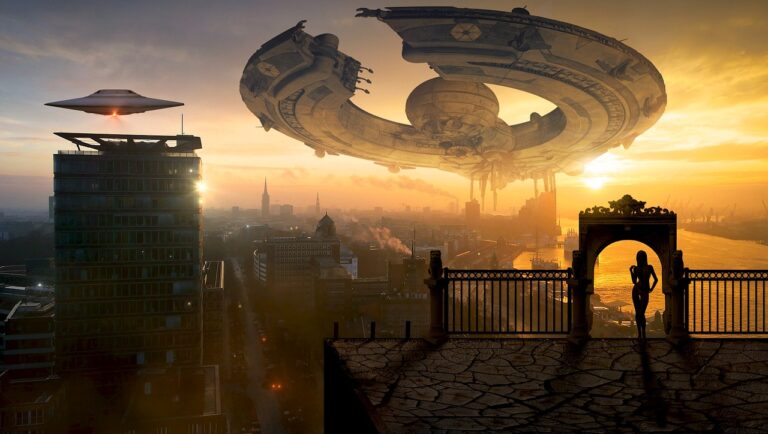
Before the plot, there is the format. A unique one. The beauty and artistry of this novel are how the story is narrated. Inspired by Chaucer’s Canterbury Tales, the story of Hyperion is shaped by the narrated memories/histories of ‘the pilgrims’ who weave together, piece by piece, the grand cosmic and ever expanding-panorama that constitutes this collection of tightly integrated tales.
Whilst avoiding the specifics, a key revelation that emerges from pilgrims’ tales, is that the Hegemony, which is vast and expansive, is also warlike and expansionist. Whilst the relationship with the A.Is has produced many benefits, but the real price humanity has paid for this relationship maybe be greater. The Hegemony, true to its expansionist nature has been spreading its foothold over planets that are yet to come under its over-lordship. Aggressively if necessary. Until it reaches a mysterious planet (Guess).
An “Outback” world: one that lies outside the control of the Hegemony of Man. The Hegemony, which until now had been operating under the direction of the TechnoCore, whose own grand ambitions: to discern the ends of collective decisions, compute the meaning of all variables, and forecast all possibilities, to foresee the trajectory of the future itself. In sum, to know (possibly) everything. Now stumbles at this hurdle. The planet (……), presents a variable that the A.Is are not able to compute. Hence actions in relation to this unknown (e.g. a forced occupation by the Hegemony) could produce unforeseeable (and uncontrollable) consequences.
Ignoring the counsel of the TechnoCore, the Hegemony moves ahead with its invasion of the Hyperion system, provoking conflict with the Ousters. Leading to, what appears to be an all-out war with the space-faring trans humans. As humanity stands on the edge of conflict: 7 individuals: A poet, a detective, a solider, a starship captain, a Jewish scholar, a counsel of Hegemony, and a Jesuit priest are chosen to embark on a pilgrimage to (….).
During the course of this journey (towards the planet itself, and then the journey towards a special location within it), each of the pilgrims recounts their personal experiences to each other. Which amounts to the story of their lives. And it is within these tales, the plot, the world, the purpose of this journey, and the meaning of the grand events that are playing out around (and within) them unfolds. In other words, all the ingredients for an epic space of opera are well and truly in place.
Central to this mesmerizing (and horrifying) tale is the Shrike. I half-thought about leaving this out, but it is the centerpiece of this novel. Without giving too much away, the Shrike is, for all intents and purposes, the “Alien” in Simmons’ work. This is not to say that aren’t other non-human creatures/characters that are (bizarrely) interesting. The Shrike is interesting because it is so alien.
Simmons, as a student of the great American writer Jack Vance, conceives non-human sentience as truly alien in their character, aims, persona, and least of all, appearance(ibid). Star Wars this is not. Hyperion and the Cantos in its entirety, are not a light read. This book is many things, but the story is not a joyous embarking. Don’t expect to find a happy anything in this book. In this world devoid of hope, the higher power is not God, but the timeless Shrike.
STYLE

Each of the stories is unique in tone, theme, style, speed, sensibility, and a whole lot more than what one person can fully identify and appreciate. Simmons’s artistry as a world builder, a narrator of events that follow a chronological timeline, a weaver of the macabre, a wordsmith, a student of literature, an amateur theologian, and in his own right: a poet, and above all a storyteller are indisputable. Hyperion, for these reasons, stands apart from any that had come before it (and possibly since) in the genre of SF.
Speaking of SF, we are talking about Speculative Fiction. NOT Science Fiction. In an interview, Simmons, made it clear that SF differs from Sci-Fi, in that the former, is tethered to real-world science, and its speculations are drawn by extrapolating from concrete scientific applications and theories, and the potential that current developments in science, and technology, but also culture, politics and even religion, hold for the future.
Unlike Sci-Fi: where the science part is pragmatically touched on as and when deemed convenient to the progression of the plot. Once again, franchises like Star Wars, which tend to tilt more towards fantasy, with little to no grounding in real scientific principles (i.e. the anything-goes formula) are a case in point. A worse example would be the ‘Dr. Who’ franchise (especially the latter seasons). Where the “science” is at best made ancillary to the agenda-driven narratives (P.C) that dominate it.
A unique facet of Simmons’s work (given my somewhat extensive reading of SF) is the use of secondary sources. It did not hit me the first time, but Hyperion is filled to the brim (but not in an overwhelming way) with quotations from a near-endless list of other great works. This took a bit of research, but aside from the Romantics and Shakespeare (which I identified), Simmons cites Virgil’s Aeneid, Platonic dialogues, even Hitler’s Mein Kampf, and many more.
One of the most impactful aspects of the book (besides the story) is its poetry. Hyperion, the book is a part of the Hyperion Cantos. Drawing inspiration from the likes of Ezra Pound and Dante, the book seems to be structured as a vast epic poem in its own right. With lines and stanzas of poems freely and ingeniously woven into the body of the work. In many ways, Dan Simmons Cantos rekindled within me my dormant interest in English literature, and poetry specifically. The rediscovered interest in this genre led me to take on my own poetry-writing endeavor. My first poetry collection Earth & Water in part can be traced to the Cantos.
Despite its scientific (i.e. techno/future) centricity, the novel stands out most notably as a remarkable literary achievement. Hyperion, like its grand predecessors in the SF genre, is not lacking in narrative, scope, and world-building, Notable comparisons would be Isaac Asimov’s great Foundation Series.
Although it must be stated, that even as a huge Asimov fan, Hyperion, as a single work, betters the granddaddy of SF in terms of depth, complexity, and the uniqueness of its narrative. Yes, and I mean the entire Foundation trilogy. This now takes us to the next section of this review: a comparative analysis of the major contenders for the title of the greatest science fiction novel ever.
IS IT REALLY THE GREATEST?
Hyperion, as a Hugo award-winning novel, is justly considered a masterwork of SF. This richly woven tale, with no central protagonist to speak of, is a story told from multiple protagonist-like perspectives, set within a vast, mysterious, complex universe. With the frailties and vagaries of human nature, playing out in the politics, the passion, and the conflicts of life. Set within the inescapable aura of darkness that pervades this world. Where goodness embodied by family, fellowship, friendship, faith, hope, and of course love, seem to fight in an ever-losing battle against an unknown ‘Kingdom of Darkness’.
But does it warrant the title of the Greatest SF ever? More pertinently, on what grounds did I base this conclusion? To answer these I will look at three other seminal works in SF. Frank Herbert’s Dune (1965), Orson Scott Card’s Ender’s Game (1985) & Isaac Asimov’s Foundation Trilogy (1951-1953). Starting with the obvious question: why did I include the whole trilogy of books by Asimov, rather than the book that started it off? Well frankly, Dan Simmons’s accomplishment in his one single work is so majestic that it takes the entire trilogy of Asimov’s most famous books to match up.
THE EXCLUDED
Before I proceed, let me quickly explain to the readers (especially the Sci-Fi fanboys and girls out there), why I have opted to Not include the two titans of SF. George Orwell’s: 1984 (1949) and Aldous Huxley’s: Brave New World (1932). The problem with these two books is their plausibility, which for me, is uncomfortably high. And their overtly political, and hence necessarily, less-science-centric character.
1984 (1949)

In the Aftermath of WWII, with the end of the Third Reich, resulting in Soviet control of much of Europe, and its geographic and diplomatic expansion elsewhere, much of the world in the period between 1945 and 1989 was divided between the Soviet Union and the United States: as the two superpowers vied for economic, strategic and ideological control/influence over the post-war world (this is history, not Orwell’s book).
In the Soviet system: characterized by a single-party totalitarian dictatorship, Orwell’s nightmare was quite realizable. The capabilities of the telescreens could either have been developed by the militaristic Soviets, or a more primitive, but equally effective contraption/system manufactured and installed in every home.
As there was no shortage of secret informers and reeducation camps in the former communist empire, this Orwellian factor is also covered. For me, 1984, is a political disquisition, woven into a beautiful (who can forget the romance between Winston and Julia) but terrifying story. In which the science, in the speculative sense, necessarily takes second place to the politics. 1984, in my opinion, could have very well come to pass, had one or more of the major totalitarian dictatorships of the past century: the Soviet Union or Nazi Germany survived and endured.
BRAVE NEW WORLD (1932)
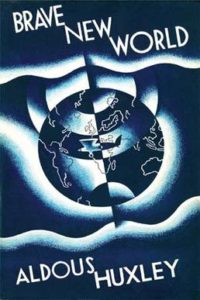
Aldous Huxley’s Brave New World, comes closer to being a ‘proper SF’ novel. The ‘science’ in this work, is clearly a focal point. For it speaks of a world where humanity lives for the sole pursuit of pleasure without pain, joy without sacrifice, sex devoid of commitment, love minus the responsibility.. Or in the classic words from the text: “Christianity without tears”(4).
Central to this tale is the control (or monopolization) of human reproduction by a central administrative body. Essentially a One World Government, where “world controllers” (effectively dictators), maintain order (or hedonistic disorder) over the people they rule over. Ensuring that no one starts worrying too much, asking too many questions, or deciding to live in the way humans have done so in “traditional” societies.
Since all human beings are grown in hatcheries, in accordance with fixed specifications: call it an evolution (or devolution) of the concept of genetically modified babies-which is already been researched (and possibly implemented) in places like China. It is a world where everyone habitually desensitizes themselves with “Soma” (the drug savvy can think of viable alternatives), and humanity lives in a perpetual dream-like state. Call it a welcome oblivion. This reality is not far-fetched. Today, democracies and dictatorships alike can fall prey to the “hope” presented in this false utopia. Hence the same “criticism” directed at Orwell’s work also applies here.
THE CONTENDERS
Before proceeding, any fan of sci-fi would know that the list of competitors that I have provided is in no way an exhaustive one. Practically it is impossible to read and analyze all the masterworks of science fiction and determine which is the best. So the books that I have chosen to include are among the best that I have read in addition to those which are, how can I put it, culturally significant novels. Thus notable absentees include: The Moon Is a Harsh Mistress by Robert A. Heinlein; 2001: A Space Odyssey by Arthur C. Clarke; The Dispossessed by Ursula K. Le Guin; and Neuromancer by William Gibson.
FOUNDATION - TRIOLOGY (1951-1953)
Then we have Isaac Asimov’s great Foundation series.
Starting with the first book: Foundation. Which was originally published as a set of short stories, almost a decade earlier. Foundation is renowned for its conceptual prowess. The idea of being able to influence the trajectory of far-future human societies, by predicting the future. Critically, in the ability to identify and affect key events in the future, that would shift the direction of human history. All via a select science: Psychohistory. This science is a fusion of history, mathematics, statistics, psychology, and predictive analytics, amongst other technical subjects. To formulate a science of shaping ‘future history’. The very idea alone is staggering.
This combined with Asimov’s structured development of the story: moves from one set of experts who direct the course of human (future) history to the next stage. Where the next set of leaders, with unique skills, and leadership methods take over. (e.g. As the baton of leadership passes from the Mayors to the Traders). The first time I read Foundation, I enjoyed it. Thoroughly. But it did not hit me. It drew me in, and generated the urge to find out what would happen next, but it did not affect me. Hyperion did.
Foundation and Empire. The second book in the series, which for me, took a while longer to get going (i.e. it was not as interesting, at least at the start). The first half of the book was a combination of political intrigue, and military strategy, with elements of espionage woven in. Having read a number of Asimov’s other works (notable here is his Empire trilogy), this is not his strength.
This is not to say he does a bad job, but it does become a drag at certain points. The second half of the book about the Mule: a mutant being with alien powers, is a much more entertaining read. And Asimov’s inventive storytelling is once again on show. On their own, Foundation and Empire do not come close to the mastery of Hyperion.
Second Foundation. A far more serious book in my view, though less action-packed than the previous two adds something different to the story.
The first half/part of the book (though shorter) is the more exciting one. As the Mule (spoilers), which survived the last book, and now reigns supreme over the ‘Foundation’, goes in search of… You guessed it, the Second Foundation. I loved the ending of Part I, but it left me with too many questions. Part II follows the efforts of the surviving remnants of the original Foundation (i.e. that which succeeded the Galactic empire), having reconstituted, continue their own search for the Second Foundation. This part of the book is dialogue centric. A bit too much for my liking. Little happens, truthfully, in terms of spaceships, combat, and political intrigue. But.. There is mind control.
This for me is what pushed the Foundation saga over the edge. When it was voted as the Best All-Time Series, winning the prestigious Hugo Award in this category; beating out J.R.R Tolkien’s The Lord of the Rings: the first and only time this accolade was given (5). The Foundation of Hari Seldon (the genius who developed psychohistory-the character who for me, embodies the vision of Asimov) is not purely an empire of states, armies, alliances, and resources. The Foundation is in fact an Empire of the Mind. Amazing! But not great enough. Hyperion (1989) alone stands above all these.
DUNE (1965)
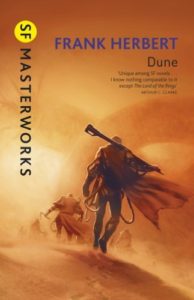
Next, Frank Herbert’s Dune.
The intoxicatingly woven tale of family, heritage, trust, betrayal, hope, honor, vengeance, the pursuit of power, faith, and of course of love. The most complex addition to this genre is ‘addiction’, born of the centrality of the multi-purpose ‘drug’ Melange (oh boy to this universe. Another drug-a non-synthetic one this time)-whose true mysteries are not revealed in the first book.
The role of Melange in affecting, influencing, guiding, shaping, and determining the choices, beliefs, vocations, and worldviews of the countless, that inhabit the worlds that constitute this vast Universe, that Herbert creates, is simply astonishing. And I am saying this as a person who has only read the first book: Dune, and around a third of, one of the prequel books: House Atreides (1999) co-authored by his son, Brian Herbert and Kevin J. Anderson.
Dune, the winner of both the Nebula and the Hugo awards, and considered to be the best-selling SF novel of all time, is a phenomenon in itself. The captivating but deadly, seductive but ruthless world that Herbert creates, is captured by the tantalizing words: “Arrakis… Dune… dessert planet” (6). The function of lore, the role of A.I-a notably disempowered one, the religion, the environment, and of course the Sandworms. Dune, from time to time shifts from serious science fiction, to outright fantasy and mysticism. Which is probably why the book managed to garner such a wide appeal.
As I have come to learn fantasy is a big thing amongst many readers, one that happens to stand apart from the appeal of SF: Notably Hard Science/Speculative Fiction. (Especially amongst the young female readership, when it is dosed with romantic escapades). Dune certainly ticks many boxes that any reader with interests in romance, drama, mysticism, and even a bit of mystery and religion would find interesting.
Along with the most unique addition. Ecology. Dune fundamentally is a book about the environment. As topics such as resources, preservation, conservation, and survival (relevant to our times) dominate. Into which the power plays of warring dynasties manifest (Game of Thrones anyone?). A beautiful and powerful book. But Hyperion is better.
ENDER’S GAME (1985)

The final challenger is Orson Scott Card’s sublime tale about child super-soldiers, who are ripped from their families, ruthlessly trained, shaped, and molded into ingenious killing machines. With the aim of staving off an alien invasion that threatens the future humanity. The novel Ender’s Game-in case one had only managed to sit through its sub-par film adaptation-is a book about family, friends, and growing up. A ‘coming of age’ story, in more ways than one. There is something very, to use a Business School expression: ‘Personal and Professional Development’ about it all. Only this time, it is set within an alien setting. Much of which is man conceived.
The mastering of one’s humanity: anger, hate, the search for one’s place in the world, and above all the yearning for love, is what underpins this, at times unnerving tale. The book, despite the spaceships, explosions, combat, and politics (the later part, which the film version does not engage one bit), is basically about growing up.
Ender, in the book, starts off as a six-year-old, and the main story takes place in the course of 5-6 years of this crucial period in a child’s history. The book won both the Hugo and Nebula awards, and its follow-up, Speaker for the Dead, (another riveting but touching tale) was also the recipient of both prestigious awards. He is the only author (as of 2019) to have both his books in the same series, and win both awards in successive years.
The Author, Scott Card, as a member of the Church of Later Day Saints, has come under fire over the years for a number of reasons. Besides his faith, which is controversial in itself, along with his critical views on homosexuality (7). Criticisms aside, his book is a mind-boggling study of the human, specifically, the child’s, mind.
One who is placed in tremendously challenging, demanding, demoralizing environments and situations. Who is then expected to learn, adapt, apply, learn more, and succeed? Succeed… For the sake of humanity’s future. Stoicism personified! The main draw of Card’s writing is his powerful insight into the human mind/heart (it gets confusing). Notably, the relationship between Ender and his sister Valentine, as is his complex relationship with his psychopathic elder brother, Peter.
The ‘Game’ that Ender plays, is what naturally grabs most of the attention. But readers of the book would know, that it is in the game within the game: the fantastical mind puzzle/challenge, where the relational dynamics and possible metaphysics, between Ender and his loved (and hated) ones, enter a different, higher plain.
The brother-sister connection is so powerfully managed by the author, one that is difficult to imagine. Given how (negatively) these things tend to go in the real world. Card’s book, given its fecund space opera elements: combat, aliens, evolving space sociology (over the course of decades); the near-clinical engagement of human psychology, and the evolving politics of informational subversion. Together could have edged out Simmons. But.
‘HYPERION. HYPERION’
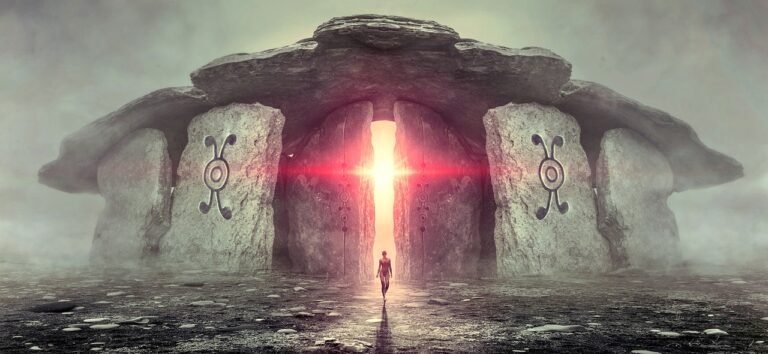
So far I have purposefully avoided getting into the tales that constitute this Masterwork. But there is one that stands out amongst the readership, that must be mentioned. Interestingly it (the Chapter/Tale) is not my favorite in the book. But it is the most touching. The most heartfelt. And seemingly the most tragic. As a man, I hate to admit this: because it’s something that hardly ever happens, no matter what I read, watch, or listen to. But upon reading this Chapter, I wept.
The Tale that engages the relationship between the father and his daughter, and mother is so profound, purely in a familial sense, that you can’t help feeling something. Even as a non-parent, I couldn’t help but empathize. But when the subject is married to the religious, the theological, and the fateful… In a world without hope, where there is no deliverer to call upon when the great power that lies beyond is the embodiment of death itself. Everything seems hopeless. Reading this book, at many points left me (as a Christian) feeling hopeless. Heck, at one point, referring to another Tale, whilst reading it, I was on verge of questioning my Creator.
Dan Simmons, as far as I can understand, is not a man of Faith, but he wrote like a person who was nourished in its matrix (8). As a student of Western culture (notably Greco-Roman) he is well versed in the intellectual foundations that constitute the Civilization that considers Athens, Rome, and Jerusalem its heritage. As I am of it, this commonality was appreciated.
An extended point on the secondary sources that I raised earlier is worth stating. The level of research and reading that Simmons has put into this work is so vast, that it probably requires a dedicated study to decipher its fullness. Even that, possibly would not be enough. Dare I say, even for Simmons. For I, as a believer, at times felt as if there was a force working through him. Simmons may not welcome that idea, but it is not meant as a flattering one.
For those who have ‘followed’ Simmons, as I have tried to (he is a tough guy to find online), one would know that he is a voracious reader, especially when preparing to write his books. His works (fiction) whilst fictitious stories, also seem like grand histories: based on the sheer amount of information and references that are packed into them. Hyperion, whilst a literary tour de force, is also an academic goldmine. As I have come to learn, Simmons’s works have been the subject of Bachelors’s and Masters’s thesis. Where the educational significance of Hyperion’s themes, on topics ranging from religion, morality, evil, literature, and the evolution of technology-to name just a few-are explored in great depth.
This book turned me into something of a student. The sheer range of ideas, the complex but beautifully woven world, the novel art of structured storytelling, the plethora of themes, motifs, characters, concepts, and countless other philosophical and spiritual questions this book evokes, leaves it as a cut above the rest.
REFERENCES
-
Dan Simmons (1989) Hyperion. Google Playbooks. E-book version.
1) Purser-Hallard, P. (1998). A Momentary stay against confusion’: An interview with Dan Simmons by Philip Purser-Hallard. Infinitarian: http://www.infinitarian.com/simmons.html#interview
2) [Vinge, V. (1993). Technological Singularity. Carnegie Mellon University, Field Robotics Center: https://frc.ri.cmu.edu/~hpm/book98/com.ch1/vinge.singularity.html ; REEDY, C. (2017). Kurzweil Claims That the Singularity Will Happen by 2045. Futurism: https://futurism.com/kurzweil-claims- that-the-singularity-will-happen-by-2045]
3) Aldous Huxley > Quotes > Quotable Quote. (n.d.). Goodreads. Retrieved August 20, 2020: https:// www.goodreads.com/quotes/475369-christianity-without-tears-that-s-what-soma-is
4) Foundation series. (n.d.). Wikipedia. Retrieved August 20, 2020: https://en.wikipedia.org/wiki/ Foundation Series
5) Arrakis. (n.d.). Fandom Wikia. Retrieved August 20, 2020: https://scifi.fandom.com/wiki/Arrakis
6) Orson Scott Card. (n.d.). Wikipedia. Retrieved August 20, 2020: https://en.wikipedia.org/wiki/ Orson_Scott_Card#Legacy_and_influence
7) White, C. E. (2001). A Conversation with Dan Simmons. Writers Write: https://www.writerswrite.com/journal/dan-simmons-9012


